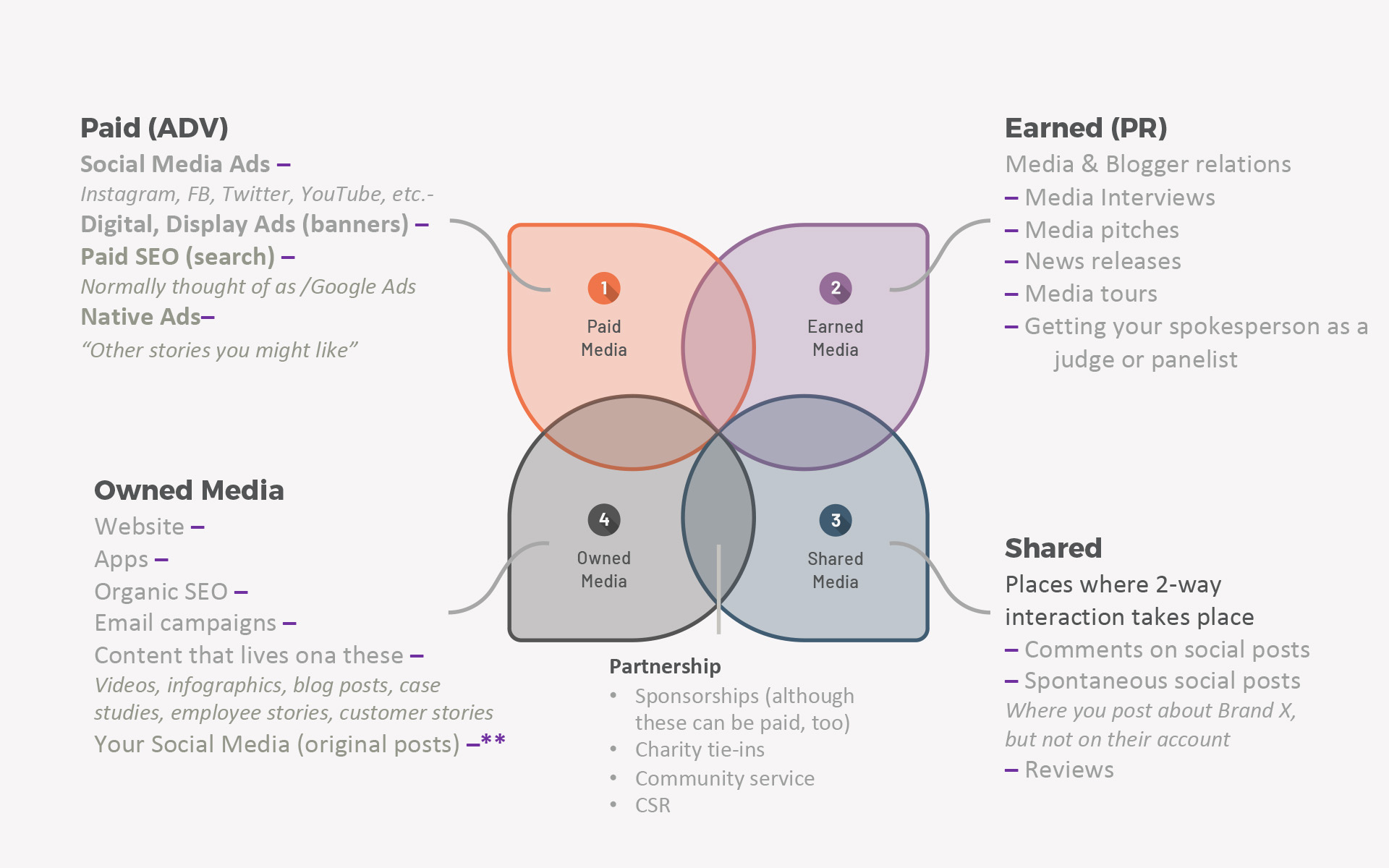Paid
Earned
Shared
Owned
media
Over a decade ago media channels used to be thought of in siloed ways:
Paid media was the primary focus of advertising.
Earned media was the primary focus of PR.
Shared and owned media was the primary focus of … no one.
Today, there is (and should be) little distinction between media types in “the converged media imperative.”
“Agencies are often specialized and don’t feel their counterparts in other focus areas are competent in integration. Digital agencies claim social agencies lack larger brand perspective (not enough top-down?), while social agencies say media buyers ignore long-term engagement (too much top-down?). In any case, not integrating, agencies are missing opportunities.”
this 4-part structure

Shouldn’t social media be under shared?
- Maybe.
- Lots of places do put it there, but when engagement has dropped to less than 2% (or even 1%), are we really sharing?
- And when we rarely hit the more button (less than 15%), and when most people (10% at best) scroll past the top 3 comments, we are redefining what shared really means.
- ———–
- With most of the competitions and guides are students participate in, they typically put organic social media under Owned media – as its an asset controlled by the brand.
- Of course, once people start to like, comment, and share, then it becomes a form of Shared media.
What about Influencers?
This one is tricky, and you might see it placed anywhere and everywhere.
Could they be?
- Paid – Yes. Because on a balance sheet this is where they show up. Whether you’re giving them cash or some kind of trade-out, influencers don’t post for your brand without compensation.
- Earned – Yes. Because you are earning the right for them to be your 3rd-party spokesperson (at least temporarily). Some take cash from anyone, but they have a reputation to uphold and most monitor who they partner with.
- Shared – Yes. Because this content is more likely to be shared or commented on than other media.
- Owned – Yes. Because lots of times you set the contract where you own the content they generate. Plus, you might want to post that exclusive video or comment on your website where not just X number of people see the post on a Monday, but where it can live forever. (Often referred to as evergreen content).
|
Pros |
Cons |
||
|
P |
Paid Media |
|
|
| E | Earned Media |
|
|
| S | Shared Media |
|
|
| O | Owned Media |
|
|
to the PESO model
Yes, the example below might be hard to read, but it shows creating Owned content like blog posts and organic posts, with places to mark when you would want to amplify that content with Paid media, specifies times to respond to Shared media, and opportunities for Earned media.
An editorial calendar also allows you to “see the big picture” and develop content/opportunities to reach out to your more active core, and your less active “lookie-loos.” #Balance
The article to the right lists a variety of social media calendars.
Some are very Excel-like, and some are very visual, including thumbnails of actual posts.
Some of these require you to build the template in an offline program, like Excel. Others are built into CoSchedule, Buffer, Social Sprout, etc., which you might use to post from a central app, rather than logging into Instagram FaceBook, or Twitter individually.

